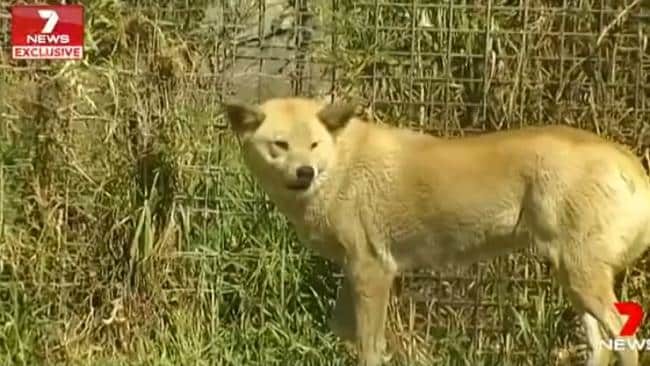A spokesman for Newcrest Mining, which operates the site at Telfer in the East Pilbara, confirmed a contract employee was attacked last Wednesday.
A Department of Mines, Industry Regulation and Safety spokeswoman said the attack occurred in a food consumption area of the mine site and an investigation had commenced.
The 54-year-old woman, understood to be a security worker at the site, is now in a stable condition at Royal Perth Hospital after having surgery for deep wounds to her legs.
"Our overriding concern is for the health and wellbeing of the injured person, and we are providing ongoing assistance to them and to their direct employer," the Newcrest spokesman said.
"To respect the privacy of the individual involved we are unable to provide specific contacts or details of medical incidents which are subject to confidentiality."

East Pilbara Shire President Lynne Craigie said it was unusual for dingoes to attack and in the 20 years that she has lived in the Pilbara she had never seen anything like it.
"Certainly they're known to hang around mine sites, particularly around camps if they get fed or if there's scraps put out they will hang around, but more often than not they're quite timid.
"Rather than showing any aggression, they tend to run away.
"Obviously any animal that's hungry is going to be aggressive but I was very surprised to hear there were three of them sort of attacking in a pack."
Ms Craigie said anyone with concerns about dingoes or wild dogs should contact the shire, or if they were on a mine notify their supervisor.
"It's terrible for this lady, and I would hope it's just one of those freak things that's happened," she said.
"We haven't had a reported increase in incidents or reported increase in numbers in dingoes in this shire from the rangers, so hopefully it's a one-off situation.
"Certainly one thing to remind people of is that these are wild animals and not to feed them around built-up areas.
"It's not good for the animals or for anyone that encounters them."
Dingoes 'lose their fear' around people
Bradley Smith from Central Queensland University recently completed a PhD on dingo behaviour and intelligence and studied Telfer's dingo population between 2015 and 2016.
Dr Smith told ABC Radio Perth Telfer had more dingoes than the average mining town and DNA testing showed on average the animals were at least 93 per cent pure dingo.
"There are about 100 living around the site which is quite a lot, normally one or two families or packs in the area, but this is quite a number of packs in the small area," he said.
"What happens usually at mines like this is we provide water sources in the desert and food sources in terms of landfill and that kind of thing, so you just get these population explosions of dingoes.
"Sometimes dingoes start to habituate to people, and if they're getting fed by people they kind of lose their fear, then they get a bit more aggressive and assertive to try and get that food off you."
Dr Smith said it was common for the animals to interact with humans in Telfer but it was rare to see such a severe attack.
"Dingoes don't consider humans to be prey, and if you think about how small a dingo is, up to your knee, they're very small, 13 to 17 kilos in size, and [humans] are quite large," he said.
"They don't think of us as prey. In most incidents that occur it's around food and dingoes trying to get food off somebody."
Dr Smith said he was aware of measures that had been taken to mitigate risks at the mine site, which included building of a fence around the waste landfill and the use of guard dogs.
Employees are also banned from feeding dingoes and face being sacked if they do so.




Reader Comments
to our Newsletter